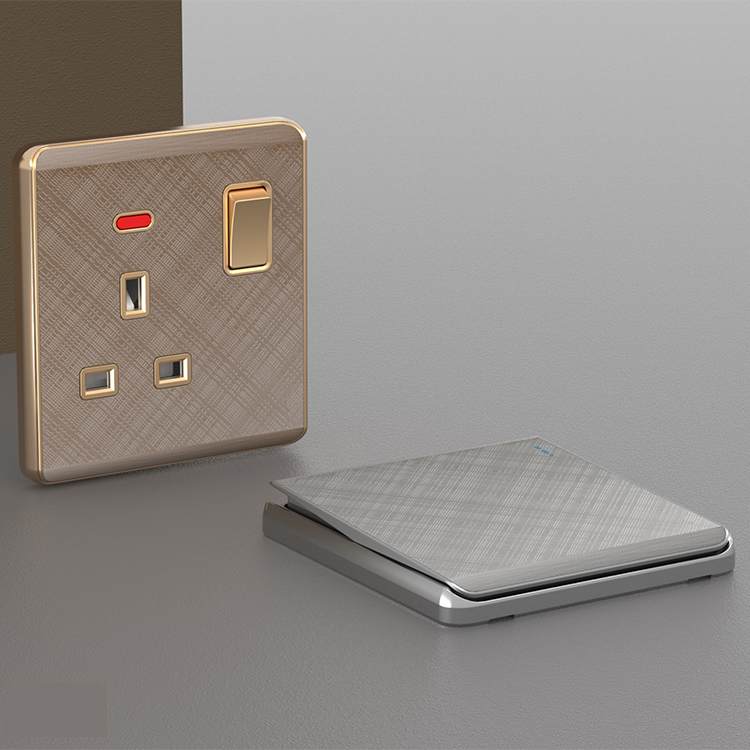Categories
- Blog (315)
.Their invention revolutionized the way we illuminate our spaces, transitioning from cumbersome manual methods to the streamlined convenience we enjoy today. Since their inception, light switches have undergone significant advancements in design, functionality, and technology.

The history of light switches traces back to the late 19th century when the first commercially viable designs emerged. These early switches, often referred to as toggle switches, featured a simple lever mechanism for turning lights on and off. Over time, innovations such as rocker switches, push-button switches, and dimmer switches were introduced, offering users greater flexibility and control over their lighting.
As technology progressed, so did the capabilities of light switches. The advent of smart home technology brought forth a new era of intelligent lighting control, allowing users to remotely monitor and adjust their lights using smartphones or voice commands. Motion sensor switches became commonplace, automatically turning lights on or off based on occupancy, enhancing energy efficiency and convenience.
Today, light switches come in a myriad of types and designs to suit various aesthetic preferences and functional requirements. From traditional toggle switches to sleek touch-sensitive panels, there’s a switch for every style and application. Innovations in materials, such as glass, metal, and plastic, have further expanded the design possibilities, enabling switches to seamlessly integrate into any décor.
In addition to their aesthetic appeal, modern light switches boast advanced features like programmable timers, color-changing LEDs, and compatibility with home automation systems. These features not only enhance convenience but also contribute to energy savings and environmental sustainability.
Looking ahead, the future of light switches holds even more promise. With ongoing advancements in wireless communication, sensor technology, and energy harvesting, we can expect to see even smarter, more energy-efficient switches that seamlessly integrate into the connected homes of tomorrow. As our reliance on technology grows, light switches will continue to evolve, remaining essential components of our daily lives.
The Evolution of Light Switches
Light switches have come a long way since their humble beginnings. From the manual toggle switches of the past to today’s sophisticated smart switches, the evolution of light switches reflects advancements in technology and design. We’ll trace the journey of light switches from their inception to the present day, highlighting key milestones and innovations along the way.
Types of Light Switches
Light switches come in a variety of types, each tailored to specific needs and preferences. We’ll explore the different types of light switches available, including toggle switches, rocker switches, dimmer switches, motion sensor switches, and smart switches. Understanding the characteristics and functionalities of each type will help you choose the right switch for your lighting needs.
Applications of Light Switches
Light switches are essential components in residential, commercial, and industrial settings. They play a crucial role in controlling the lighting in homes, offices, schools, hospitals, and public spaces. We’ll examine the diverse applications of light switches across various environments, highlighting their importance in enhancing safety, comfort, and energy efficiency.
Innovations in Light Switch Technology
Advancements in technology have revolutionized the capabilities of light switches, paving the way for smarter, more energy-efficient solutions. We’ll explore the latest innovations in light switch technology, including wireless connectivity, voice control, occupancy sensing, and integration with home automation systems. These innovations offer greater convenience, flexibility, and control over lighting systems.
Choosing the Right Light Switch
With a myriad of options available, selecting the right light switch can be daunting. We’ll provide practical tips and guidelines to help you choose the perfect light switch for your specific needs and preferences. Whether you’re renovating your home or upgrading your office lighting, understanding factors such as switch type, features, and compatibility will ensure a seamless experience.
The Future of Light Switches
As technology continues to evolve, the future of light switches holds exciting possibilities. We’ll speculate on emerging trends and developments in light switch design and functionality, such as advanced sensor technologies, energy harvesting mechanisms, and seamless integration with smart home ecosystems. The future promises even greater convenience, efficiency, and customization in lighting control.
Conclusion
Light switches may seem like simple devices, but they play a significant role in shaping the way we interact with our environment. From their humble beginnings to the latest smart innovations, light switches have evolved to meet the changing needs of society. As we look to the future, the journey of light switches continues, driven by innovation, convenience, and sustainability.